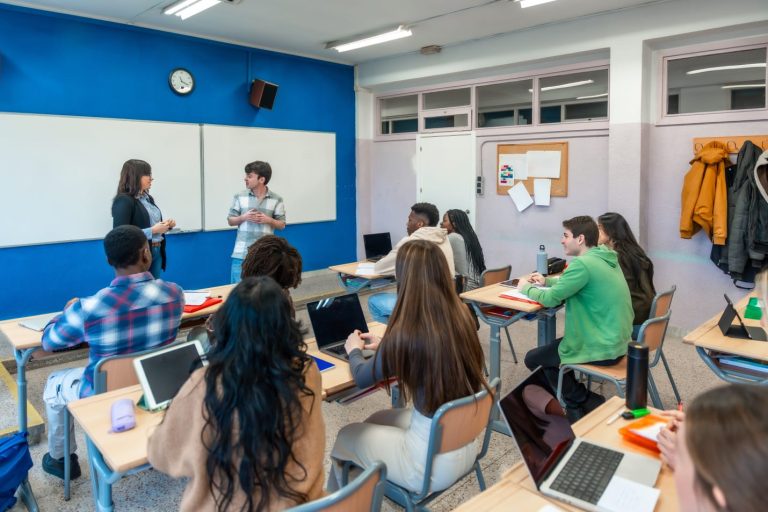The Role of Video in Increasing Student Engagement and Performance

Imagine a classroom where students are actively participating, their eyes glued to the screen, fully engaged in the lesson. Or picture a group of learners collaborating effectively, using video content to explore complex topics in-depth. The transformative power of video in education is making this vision a reality, particularly in enhancing student engagement.
With the increasing availability of technology and diverse methods of content delivery, educators are finding that integrating video into their teaching strategies significantly impacts how students interact with the material. Keep on reading to learn more.
Also Read: Use Trinka AI Grammar Checker to Improve Your Research Writing
Understanding the Impact of Video on Learning
Video is not just something people like-it is a strong way to help people learn. It works well because it matches how many people like to take in new ideas. Instead of only reading or listening, video gives pictures and sound together. This makes it easier to understand and remember what is being taught.
Different people learn in different ways. Some people like to see pictures and animations. These help show ideas that are hard to explain with just words. Others like to hear things, and videos let them hear the lesson too. Some people learn best by doing things. Interactive videos-where you click or answer questions-help these learners stay focused. Because video uses many ways to teach, it helps more people learn better.
Enhancing Interactivity and Collaboration
Traditional lecturing methods can sometimes make students passive recipients of information. However, video content can enhance interactivity and collaboration within the classroom. Educators can utilize platforms that allow students to contribute to video discussions, creating a stimulating environment where they can share insights and ask questions.
Moreover, group activities centered around video projects can promote teamwork and communication skills. For example, students can create their own documentaries or presentations on relevant topics. This process not only fosters creative thinking but also deepens their understanding of the subject matter. By leveraging a wide range of educational video production services, teachers can introduce various multimedia elements that appeal to students, keeping them engaged and motivated.
Supporting Diverse Learning Needs
In many classrooms, students are all different. They come from different places and learn in different ways. Some students learn quickly, while others need more time. Video is a tool that helps teachers meet all these needs. It lets students learn at their own speed. If someone does not understand a lesson the first time, they can watch the video again and again.
Teachers can also give out extra videos to help students who are having a hard time. These might be how-to videos or recordings of past lessons. This helps students who feel lost during class catch up without feeling left out. It also helps students feel more confident. Everyone gets the chance to learn in a way that works best for them. This makes the classroom a better place for all students.
Connecting Learning to the Real World
Videos help students see how what they learn in school matters in everyday life. When they watch or create videos about real-world topics, lessons start to feel more useful and exciting. Videos can explain problems people face today or show skills that might help with jobs in the future. This makes learning feel more connected to the world around them.
Building Important Life Skills
Making videos teaches more than just facts. Students learn how to find good information, think clearly about what they’ve learned, and use tools like cameras, microphones, and video editing programs. These skills-such as problem-solving, critical thinking, and using digital tools-are important for many careers. Video projects give students chances to practice these skills in a fun and hands-on way.
Encouraging Creativity and Problem Solving
Students working on video projects often come up with new and smart ideas. They learn how to plan, solve problems, and express their thoughts in creative ways. Teachers often notice that video work brings out creativity, even in students who usually don’t speak up in class. This kind of learning helps students grow in confidence and prepares them for different kinds of work and teamwork in the future.
Supporting Project-Based Learning
More schools are using project-based learning to help students learn by doing. Video fits well with this style because it lets students create something meaningful while learning key ideas. Making videos turns lessons into real projects that students can be proud of. As this way of learning grows, video will likely become an even bigger part of how students learn and show what they know.
Implementing Video Strategies in the Classroom
Using video in class can help students stay interested and learn more, but teachers need a good plan to make it work well. Simple changes in how lessons are taught can bring big results when video is used the right way.
One helpful idea is to add short videos to lesson plans. These clips can introduce new topics in a fun and easy-to-understand way. Videos can also break down hard ideas into smaller parts, which helps students follow along.
After watching, it’s useful to talk about the video as a group. Teachers can ask questions and let students share what they think. This helps students not only remember what they saw, but also understand it better.
Letting students make their own videos is another great strategy. When students create videos to explain a lesson, they show what they’ve learned in a creative way. It also helps build skills like planning, writing, and using technology.
Embracing the Future of Education
Using video in schools isn’t just about keeping up with new tools. It helps students stay focused and learn better. When teachers use video the right way, it can close learning gaps and help all kinds of students, no matter how they learn best.
Video also makes it easier for students to work together and build teamwork skills. As schools change and grow, teachers need new ways to teach that match what students will face in the future. Now is a good time to try using video in the classroom and see how it can help students learn more and do better.
For more related topics, check out the rest of our blog!






